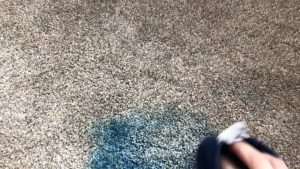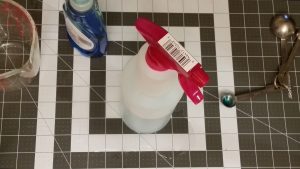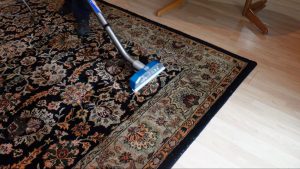Spot Cleaning Hacks for Common Carpet Stains
Are you struggling with stubborn carpet stains? Don’t worry—I’ve got you covered! Let’s explore the most common carpet stains and give you the basics on spot cleaning to tackle them effectively. From food and beverage stains to pesky pet accidents and ink and dye spills, we will share materials and techniques to help you remove these blemishes.
Plus, we will offer tips on preventing future stains and knowing when to call in the professionals. Keep reading to keep your carpets looking spotless!
Common Types of Carpet Stains
Dealing with carpet stains? Who isn’t, right? You’ve got wine stains from those fun nights, coffee stains that are dark and stubborn, blood stains that can be quite the eyesore, grease stains from cooking mishaps, mud stains dragged in from outdoors, and ink stains that can be a real pain to remove.
Ever spilled a glass of wine and left behind a deep-coloured blot? Those are tough to get out of. And those coffee stains? They’re notorious for being stubborn and dark. Then there are the blood stains, vivid and alarming. Grease stains can make your carpet look messy, and mud stains from outside can embed right into those fibres. And let’s not forget ink stains – they’re tricky and can become permanent if you don’t act fast.
Spot Cleaning Basics
To keep your carpet looking fresh, you’ve got to master the spot-cleaning basics. That means tackling spills as soon as possible, picking the right cleaning products, and knowing how to tackle fresh stains, old stains, and stubborn ones.
Materials and Techniques
Regarding materials and techniques for spot cleaning, you can use a variety of cleaning products and household items such as vinegar, bicarbonate of soda, hydrogen peroxide, white vinegar, washing-up liquid, and soda water, combined with techniques like blotting, vacuuming, and scrubbing.
For more targeted spot cleaning, it’s essential to have specific materials at hand. A carpet brush is incredibly useful for gently scrubbing away tough stains on carpets or rugs. A microfibre cloth is ideal for delicate surfaces as it won’t leave any fluff or residue. Absorbent towels are crucial for soaking up excess moisture after treating a stain.
To effectively remove different stains, start by blotting any excess liquid with a clean cloth, then apply the appropriate cleaning solution and gently scrub the area with the carpet brush. Finish by blotting again with the absorbent towel to dry the spot thoroughly.
Removing Specific Types of Stains
Regarding getting rid of certain stains on your carpet, you must use the best methods and treatments for your carpet fibres. Whether using a carpet stain remover, natural ingredients, or enzymatic cleaners, choose the one that suits your carpet the most.
Food and Beverage Stains
Dealing with food and beverage stains on carpets can be challenging. Things like wine stains and coffee spills can be a real pain, but with the right carpet cleaning solution and techniques, you can tackle them like a pro.
You’ve got to act fast when those stains hit. Start by gently scraping off any solid gunk with a spoon. Then, grab a clean cloth and blot the area to soak up as much liquid as possible without making the mess worse. Whip up a mixture of water and white vinegar for wine stains—it’s like magic. And when it comes to coffee spills, club soda is your bestie for neutralising the stain. Remember to test any cleaning solution on a tiny, hidden spot before going all-in on the stain itself.
Pet Stains
When dealing with pet stains, you want to give them special attention and consider using enzymatic cleaners. These cleaners are like the superheroes of stain removal, breaking down all the organic gunk in the stain. You’ll also want to do some blotting, vacuuming, and scrubbing to protect those precious carpet fibres.
Enzymatic cleaners are your best friends when it comes to pet stains. They’re designed to zero in on those pesky enzymes in the stains, removing the stain itself and those lingering odours. To tackle a pet stain effectively:
- Start by blotting up as much of the mess as possible with a clean cloth or kitchen roll.
- Remember, no rubbing will only make things worse by pushing the stain deeper into the carpet.
- After blotting, follow the instructions on the enzymatic cleaner bottle and let it work its magic for the specified time to break down the stain completely.
Ink and Dye Stains
When faced with ink or dye stains, they are tough to tackle. But don’t worry, you can grab some household staples like hydrogen peroxide and white vinegar to get the job done if you use them correctly, along with some blotting and scrubbing techniques.
To tackle ink or dye stains, you’ve got to act fast to prevent them from setting into the fabric. Start by blotting the stain with a clean cloth or paper towel to soak up as much of that pesky ink as you can. Whatever you do, don’t start rubbing the stain—that’ll only make it spread more.
Mix equal parts of hydrogen peroxide and white vinegar and slather that solution onto the stain. Let it chill for a few minutes, then gently scrub the area with a soft brush or cloth. Rinse it thoroughly with cold water and, if needed, go in for another round until that stain is history.
Preventing Future Stains
To prevent future stains, you must take proactive steps to protect and care for your carpet. Clean it regularly, choose stain-resistant carpets, and pay extra attention to high-traffic areas. This will keep your carpet in good condition and preserve its colour.
Protective Measures and Tips
To protect your carpet, you should use household items and cleaning products that offer eco-friendly solutions. Quick fixes can also help keep your carpet looking fresh and lasting longer.
To make sure your carpet stays in top shape, think about enforcing a no-shoe rule inside to stop dirt and debris from getting tracked in. Regular vacuuming is key in removing surface dirt and preventing it from sinking deep into the fibres. If you spill something, make sure to blot it up right away with a clean cloth. Avoid rubbing, as that can just spread the stain. For a fast refresh, sprinkle some baking soda on your carpet, let it sit for 15 minutes, and then vacuum it to eliminate any odours.
When to Call a Professional
Knowing when to call a professional for carpet cleaning can save you time and ensure a thorough, deep cleaning. Professional advice can be invaluable if you opt for steam cleaning, dry cleaning, hot water extraction, or carpet shampooing.
Signs of Permanent Damage
You may start noticing signs of wear on your carpet, such as fraying fibres, fading colours, or stubborn stains that won’t shift, no matter how many times you try to clean them. Consider seeking professional help or even replacing the carpet altogether.
When these red flags pop up, it’s essential to contact a carpet specialist who can look at the damage. They’ll be able to tell you if the carpet can be saved through a deep clean or restoration techniques. A pro can assess the wear and tear, colour damage, and pesky stains to determine the next steps. Sometimes, they suggest special treatments to breathe new life into your carpet, but other times, replacing it is your best bet.




